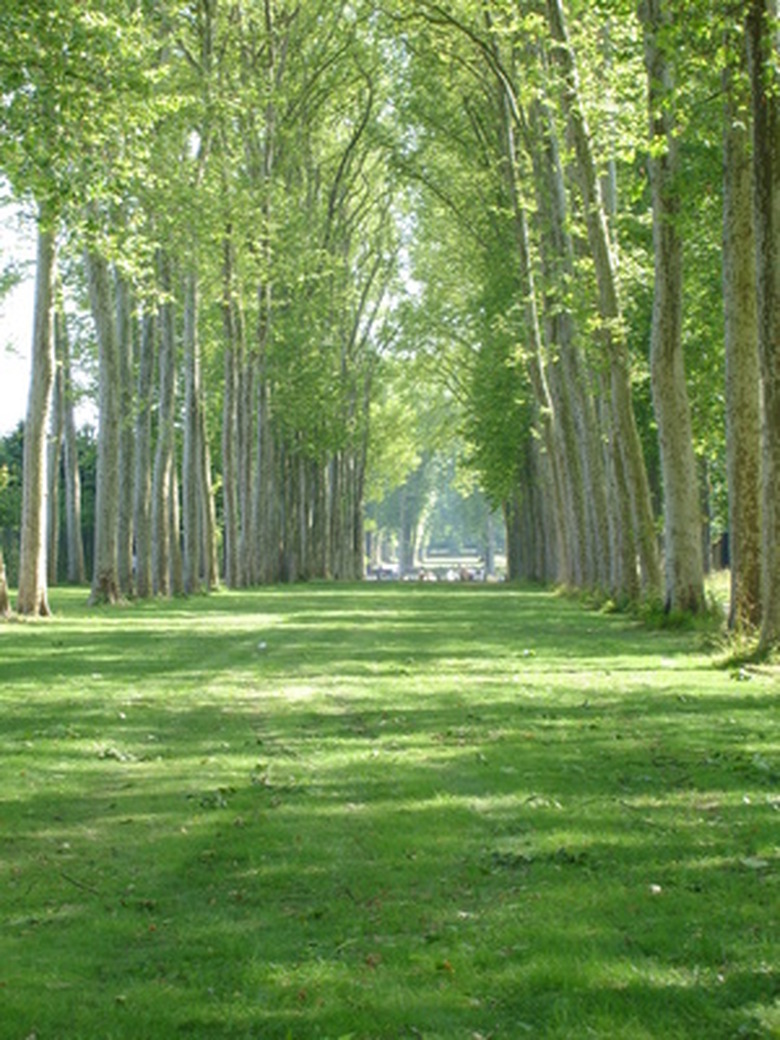The Best Desert Shade Trees In Arizona
By planting shade trees in an Arizona backyard, a family can enjoy being outdoors well into the hottest months of June, July and August. Groupings of mature trees that shade and cool the western exposure of a house can contribute to lowering summer air conditioning costs. Ideal candidates for desert shade trees are those that grow as wide as they are tall rather than tall and skinny. Look for trees with a dense canopy of foliage that remains on the tree all or nearly all year round.
Brazilian Pepper Tree
The Brazilian pepper tree is a fast grower that can reach 15 to 30 feet in height and width, suitable dimensions to fit well in any size backyard. With pruning of the lower branches, the tree can grow a canopy that begins above the height of the average person. This tree's canopy is dense enough that it can also serve as a property screen. The tree tolerates full sun quite well. The spring blooms are a soft cream color, and on the female trees bright red ornamental fruit appears as well. The tree can get by with being watered every several months in the cooler months but may need once a week watering in the middle of the Arizona desert summer. The tree does shed some leaf litter requiring cleanup.
- By planting shade trees in an Arizona backyard, a family can enjoy being outdoors well into the hottest months of June, July and August.
- With pruning of the lower branches, the tree can grow a canopy that begins above the height of the average person.
Monkey Ear Tree
The towering monkey ear tree can reach a height and spread of 40 to 60 feet. The enormous canopy of this tree can create a wide, inviting area of shade. The foliage is a dark green color with large leaves. The dark seed pods of the tree have a distinctive shape that looks somewhat like an ear. Young trees may need weekly irrigation in their first few summers in an Arizona backyard. This can be reduced to monthly watering as the tree matures. The pods do generate some ground litter. Trimming of the lower branches when the tree is young encourages the development of the canopy.
- The towering monkey ear tree can reach a height and spread of 40 to 60 feet.
- The dark seed pods of the tree have a distinctive shape that looks somewhat like an ear.
Ironwood Tree
The ironwood tree is slow growing but tough and enduring, said to be capable of living 500 years or more. It grows to a height of 30 feet and a width of 25 feet. If the lower branches are pruned as the tree grows it can provide the desired canopy shape for shade. Toward the end of spring the tree bursts out with lavender blossoms, after it drops a large quantity of gray-green leaves on the ground. The ironwood tree has sturdy and very sharp thorns so caution must be observed when trimming it. This hardy desert dweller is unfazed by drought conditions in the Arizona desert, but will grow faster if watered several times a month during the hottest periods of the year.
References
- "Landscape Plants for Dry Regions"; Warren Jones and Charles Sacamano; 2000
